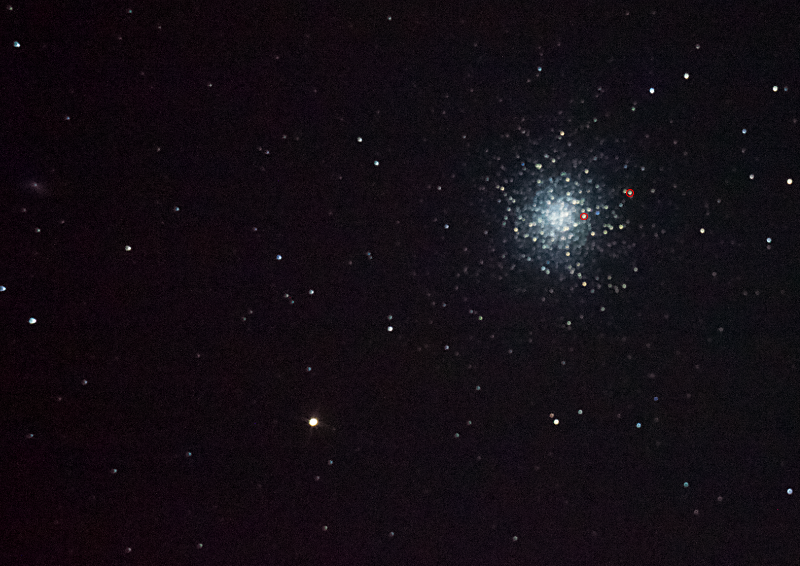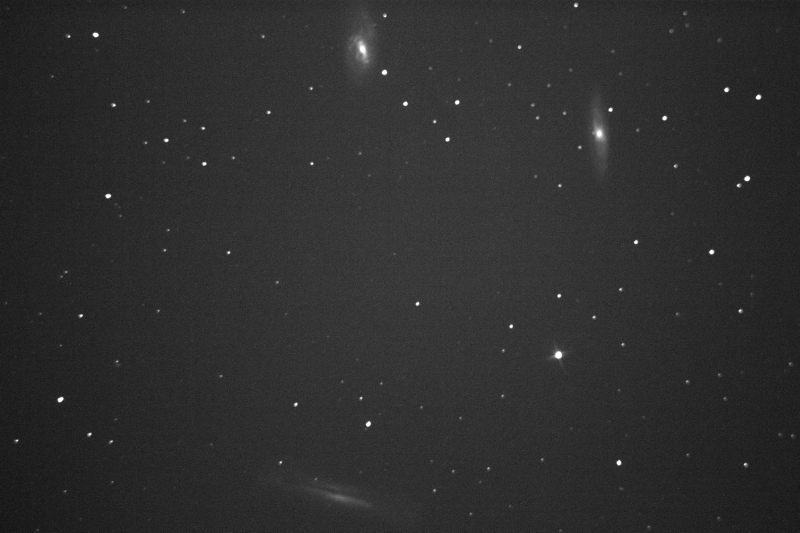Conditions were not great, moonlight was a pain, and some red light leaked from some camera status light into all of my M3 images.
On the positive side I finally got to see M3 and M5 and also M57 (Ring nebula), and I got decent images (for me anyway) of M13 and the leo triplet.
M57 (Ring Nebula)
I have long wanted to try to observe a planetary nebula, but I think I had the size all wrong. I was looking for something larger.
In my finder scope M57 looked a lot like a star, and if it was not so easy to locate due to being in between two bright stars I would have probably scanned past it. Once I found it, the ring structure was clearly visible at medium magnification. Really neat!
I think that having calibrated my expectations now, finding other planetary nebulae will be easier.
M13 (Hercules globular cluster)
Earlier this year I ordered a 2x TV Powermate mainly for planetary observation. To test it I tried using it together with my 2″ Aero on the globular clusters and M57. It worked way beyond my expectations.
I also took 15 seconds exposure of M13 below (the most my tracking was good for). The two red spots I marked are two variable stars, which I found comparing the chart here to my image.

These stars have a periodic change in brightness. The period of their change in brightness determine their absolute brightness. Then the relative brightness (the brightness observed from Earth) and the absolute brightness can be used to find the distance to the star.
It would be really nice to try and observe M13 with the same magnification over time, and see if I can catch the blinking.
Leo triplet
I observed these galaxies visually some time ago, but this time I got to take a series of pictures as well. Out of like around 20 exposures of 15 seconds, I got 6 images that were fine. After stacking this was the result. Noisy, but some structure at least.
I had a lot of fun this night!

